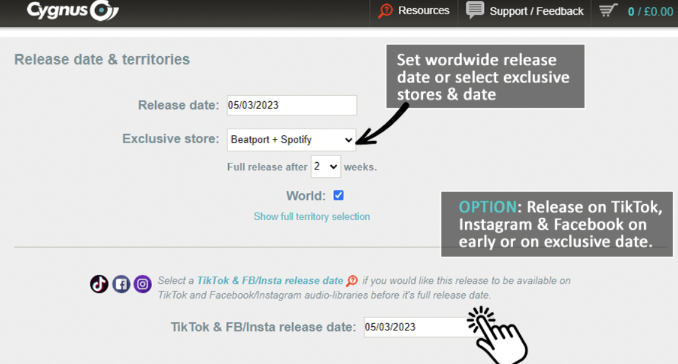Using ‘TikTok Sounds’
The use of TikTok sounds is a fundamental aspect of TikTok’s creative process. Many viral trends and challenges on the platform are associated with specific sounds that users incorporate into their videos. When someone creates a video using a particular sound, that sound’s page is linked to the video, allowing other users to easily discover and use the same sound for their own videos.
This has led to the phenomenon of “sound trends,” where certain audio tracks become widely popular and recognisable across TikTok.
Using ‘TikTok Sounds’
Here’s how to use sounds on TikTok, right inside the app:
- Open the TikTok app.
- Click on the + sign at the bottom of the screen as you would when posting a new video.
- Tap on the “Add sound” option at the top of the screen.
- Select the sound.
Trend Utilisation:
TikTok sounds are often associated with popular trends, challenges, and memes. Incorporating these sounds into your videos can help your content align with what’s currently trending on the platform, increasing the chances of your videos being discovered and shared.
Metrics:
We can see the amount of content creators that have used your sound. This is a fantastic metric and shows active engagement. Using TikTok sounds can hugely influence DSPs like Spotify, YouTube & Apple, and we’d say that this is the main focus when coming to promotion and marketing surrounding a release.
Viral Potential:
Some TikTok sounds go viral, gaining massive popularity and recognition. If you use a sound that’s currently going viral, your video might ride the wave of that trend and reach a larger audience.
Community Engagement:
Using well-known TikTok sounds can create a sense of familiarity and community. People who recognise the sound might be more likely to engage with and share your video.
Discoverability:
TikTok’s algorithm often promotes videos that use popular sounds. This can increase your video’s visibility on the “For You” page, where many users discover new content.
Creativity within Constraints:
Using TikTok sounds challenges you to get creative within the constraints of a familiar audio context. You can put your unique spin on a sound that many people are using, showcasing your creativity in how you interpret the trend.
Tracks that have most notably used TikTok Sounds
“Lottery” by K CAMP:
The song “Lottery” by K CAMP saw a resurgence in popularity thanks to TikTok. The sound became a backdrop for the “Renegade” dance challenge created by a young TikTok user named Jalaiah Harmon. The challenge went viral, and the song experienced a revival in streams and recognition.
“Supalonely” by BENEE ft. Gus Dapperton:
“Supalonely” became a TikTok sensation through its use in various challenges and dance trends. The song’s relatable lyrics and upbeat melody made it a hit on the platform.
“Say So” by Doja Cat:
While Doja Cat was already an established artist, her song “Say So” gained additional popularity through TikTok. The “Say So” dance challenge went viral, with users creating their own choreography to the song. This trend helped elevate the song’s position on music charts and contributed to its commercial success.
These songs have gone on to do incredibly well across DSPs, and serve as an example that using TikTok sounds to influence other DSPs like Spotify, Apple Music, and others can be a creative strategy to expand your music’s reach.
Here’s how to use TikTok Sounds to push your music:
Create Viral Content:
Participate in TikTok trends and challenges using popular sounds. Create engaging videos that feature your music or original sound bites. If a TikTok sound goes viral, people may search for it on streaming platforms out of curiosity.
Behind-the-Scenes Content:
Create TikTok videos that offer a behind-the-scenes look at your music creation process. This can spark interest and curiosity among viewers, prompting them to explore your music further.
Teasers and Previews:
Offer sneak peeks of upcoming releases or snippets of your songs on TikTok. Encourage viewers to listen to the full version on streaming platforms once it’s released.
Collaborate with Influencers:
Partner with TikTok influencers to create content that promotes your music and its availability on DSPs. Their audience might be more inclined to check out your music on streaming platforms.
Consistent Branding:
Maintain a consistent visual and audio branding across your TikTok videos and DSP profiles. This helps listeners recognise your music when they come across it on streaming platforms.
Collaborative Playlists:
Create playlists on DSPs that feature not only your music but also popular TikTok tracks. This can help bridge the gap between TikTok and streaming platforms.
